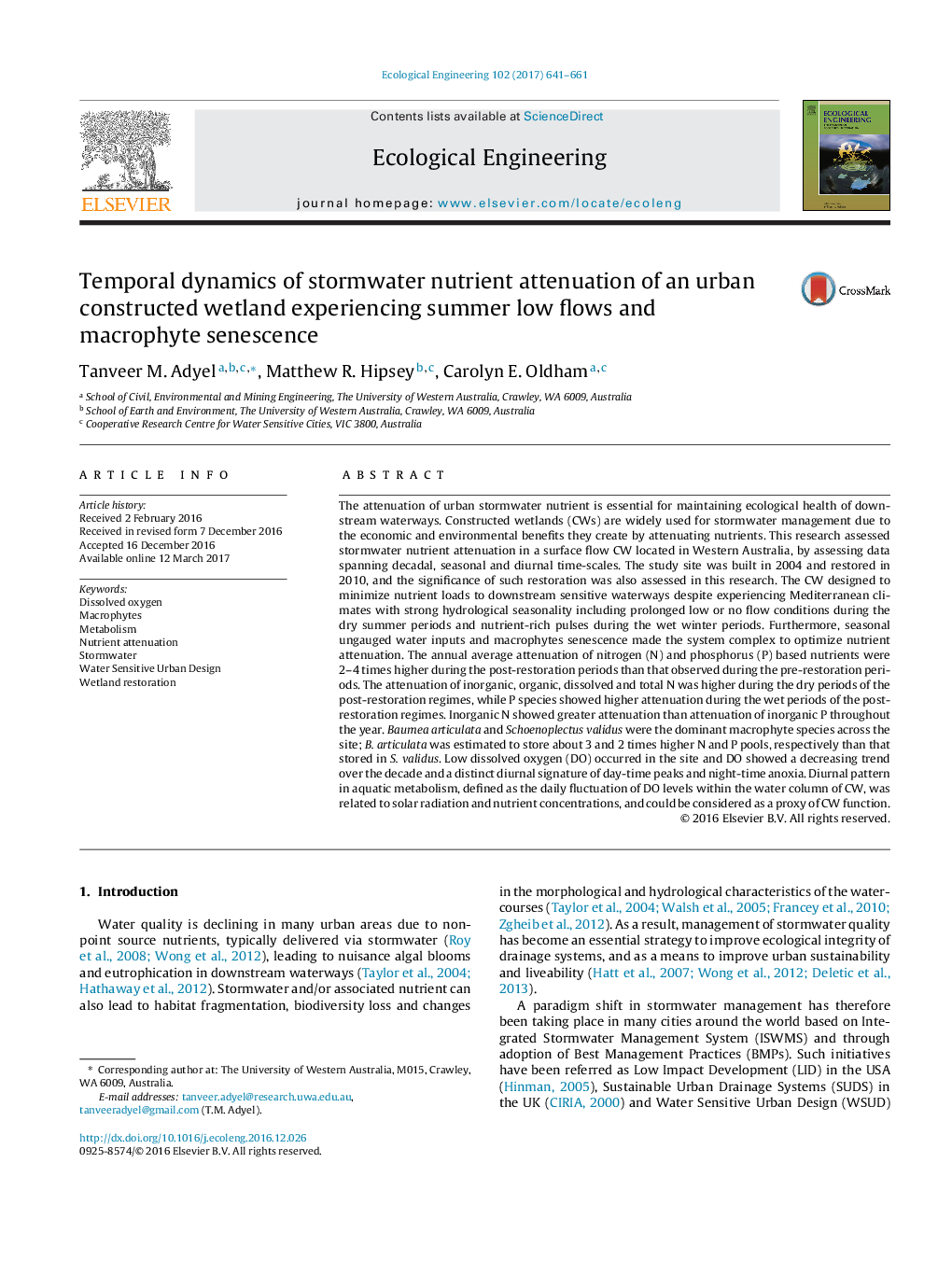| کد مقاله | کد نشریه | سال انتشار | مقاله انگلیسی | نسخه تمام متن |
|---|---|---|---|---|
| 5743811 | 1617997 | 2017 | 21 صفحه PDF | دانلود رایگان |
- Restoration switched the CW from nutrient source to nutrient sink.
- Inter-specific competition observed for nutrient among macrophytes.
- DO showed a distinct diurnal signature with anoxia at night.
- Diurnal DO indicated metabolism as a proxy of CW function.
The attenuation of urban stormwater nutrient is essential for maintaining ecological health of downstream waterways. Constructed wetlands (CWs) are widely used for stormwater management due to the economic and environmental benefits they create by attenuating nutrients. This research assessed stormwater nutrient attenuation in a surface flow CW located in Western Australia, by assessing data spanning decadal, seasonal and diurnal time-scales. The study site was built in 2004 and restored in 2010, and the significance of such restoration was also assessed in this research. The CW designed to minimize nutrient loads to downstream sensitive waterways despite experiencing Mediterranean climates with strong hydrological seasonality including prolonged low or no flow conditions during the dry summer periods and nutrient-rich pulses during the wet winter periods. Furthermore, seasonal ungauged water inputs and macrophytes senescence made the system complex to optimize nutrient attenuation. The annual average attenuation of nitrogen (N) and phosphorus (P) based nutrients were 2-4 times higher during the post-restoration periods than that observed during the pre-restoration periods. The attenuation of inorganic, organic, dissolved and total N was higher during the dry periods of the post-restoration regimes, while P species showed higher attenuation during the wet periods of the post-restoration regimes. Inorganic N showed greater attenuation than attenuation of inorganic P throughout the year. Baumea articulata and Schoenoplectus validus were the dominant macrophyte species across the site; B. articulata was estimated to store about 3 and 2 times higher N and P pools, respectively than that stored in S. validus. Low dissolved oxygen (DO) occurred in the site and DO showed a decreasing trend over the decade and a distinct diurnal signature of day-time peaks and night-time anoxia. Diurnal pattern in aquatic metabolism, defined as the daily fluctuation of DO levels within the water column of CW, was related to solar radiation and nutrient concentrations, and could be considered as a proxy of CW function.
311
Journal: Ecological Engineering - Volume 102, May 2017, Pages 641-661
